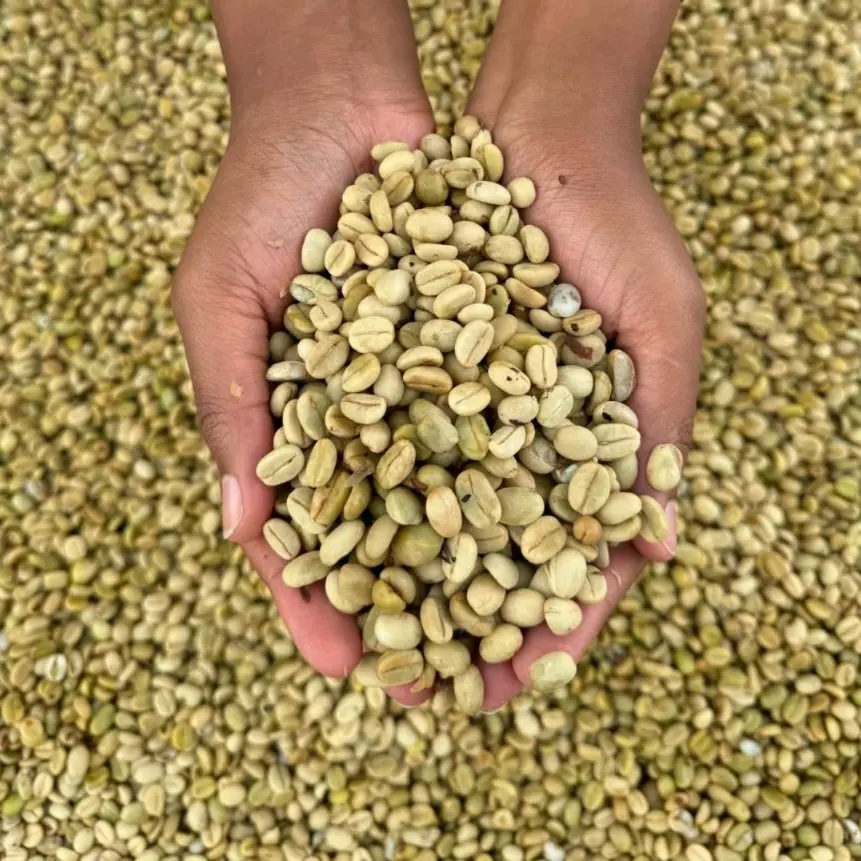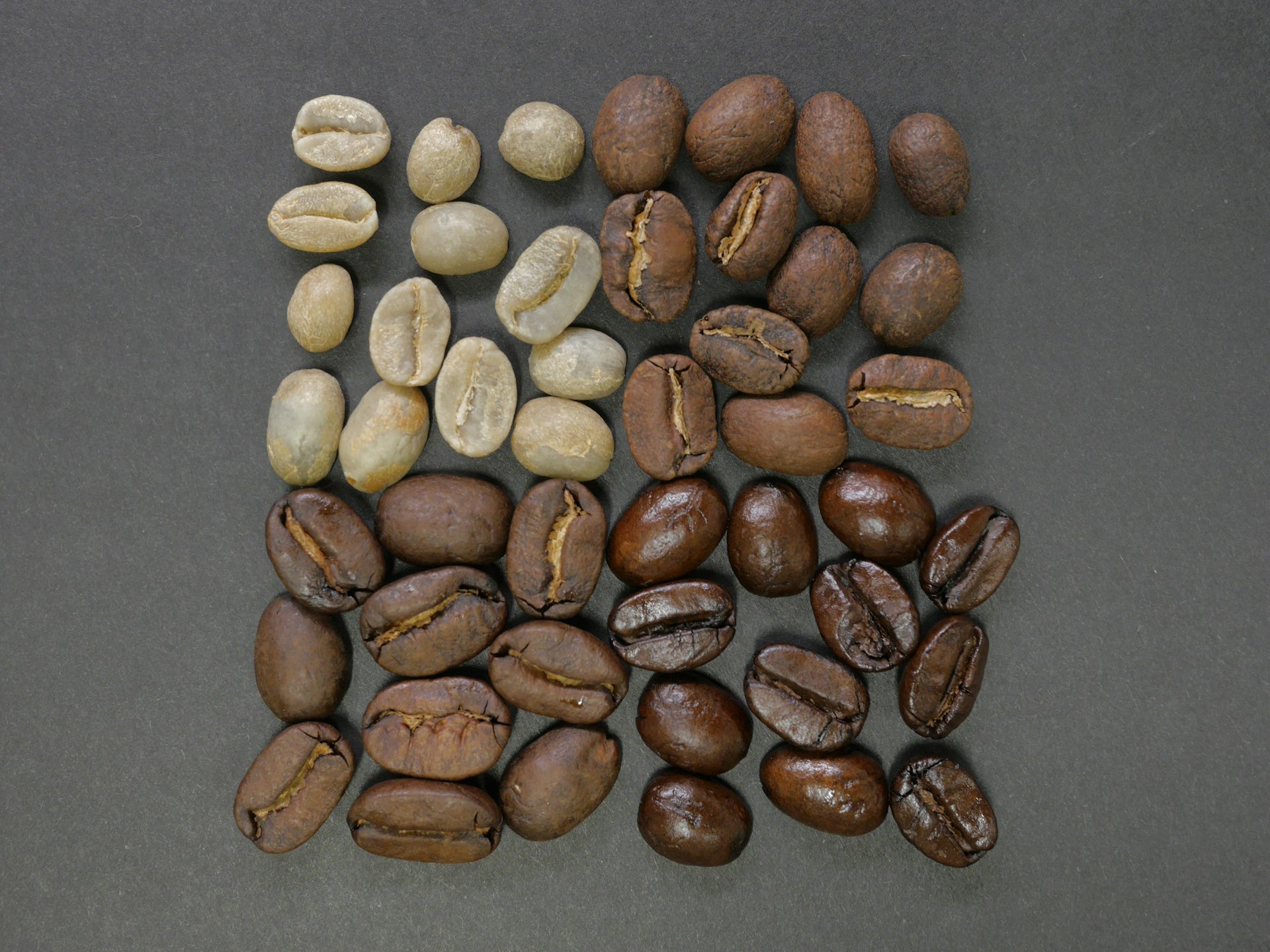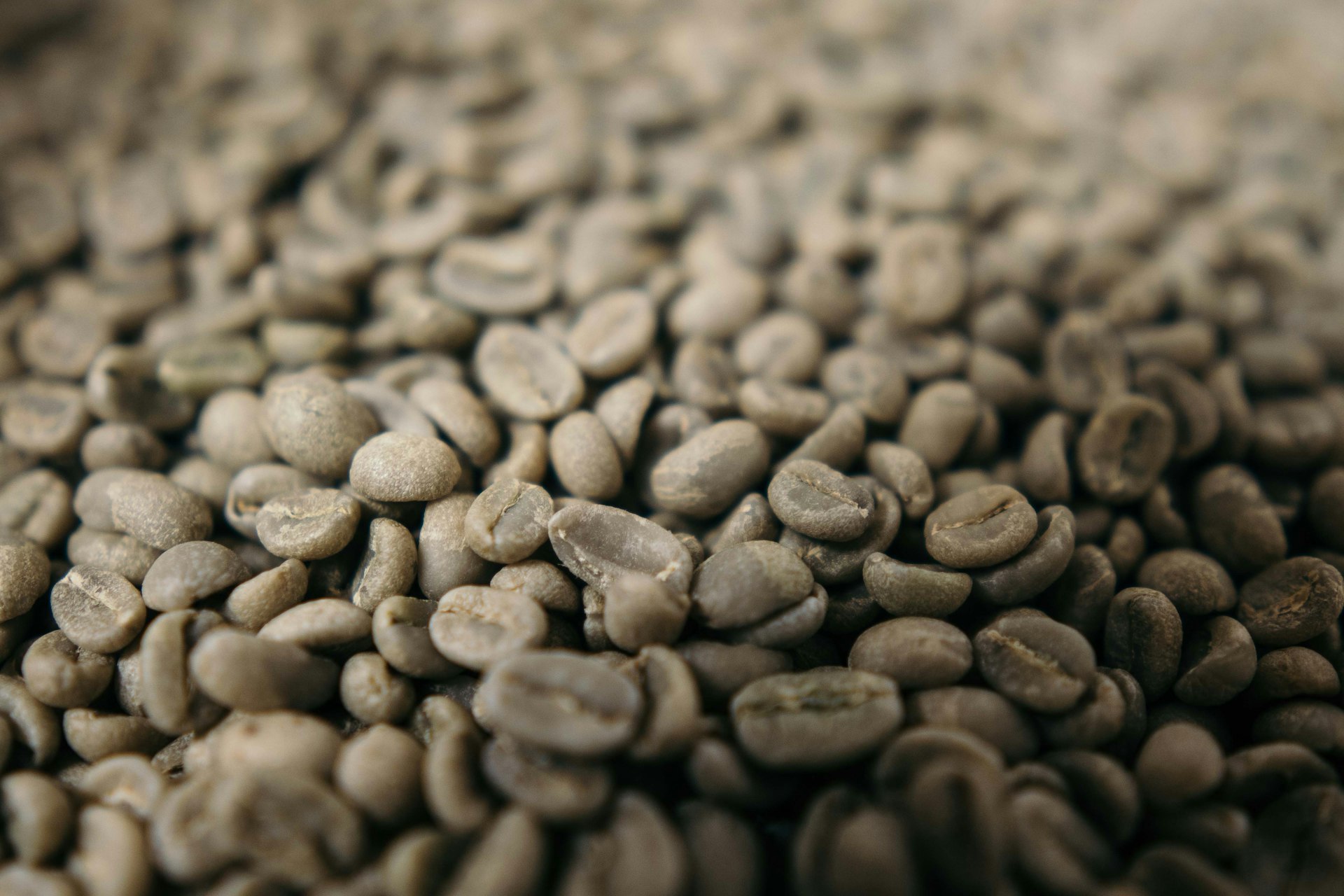You’ve probably seen them before — those two little letters printed boldly on a bag of Kenyan coffee: AA, AB, or sometimes PB. They look fancy, almost mysterious, like a secret code for coffee insiders.
But what do they actually mean? And do they really affect how your coffee tastes?
Let’s decode Kenya’s coffee grading system — one of the most detailed and respected in the world — and find out what those grades reveal about the journey from bean to cup.

Why Kenya Grades Its Coffee So Meticulously
Kenyan coffee isn’t just grown; it’s curated. Every harvest, millions of beans are sorted, screened, and separated according to strict national standards before they reach the auction floor or an exporter’s list.
The idea is simple: quality through consistency.
After coffee cherries are pulped, fermented, and dried, the green beans are hulled and passed through a series of screens — literally metal trays with holes of different sizes. The goal is to classify beans by size and density.
This system helps traders, roasters, and buyers understand what they’re getting — and ensures that when you buy a Kenyan AA, you know it meets a certain physical quality standard.
The Famous “AA” – The Pride of Kenya
“AA” is the top grade most people recognise, and for good reason. It represents the largest and densest beans, typically screened through holes measuring 7.2 millimetres in diameter.
In simple terms: big beans, big potential.
Because larger beans usually come from higher altitudes (where growth is slower and nutrients are concentrated), AA coffees often have bright acidity, complex fruit notes, and layered sweetness — that classic Kenyan cup profile.
It’s not a guarantee of flavour, but it’s a strong hint that the coffee was well-grown and carefully processed.
AB – The Balanced Middle Child
AB coffee comes from beans that are slightly smaller than AA — screened between 6.8 and 7.2 mm. But don’t be fooled by size; some of Kenya’s most balanced and drinkable coffees carry the AB label.
Many roasters actually love AB for its consistency and cup balance. While AA might be punchy and loud — think bright blackcurrant, citrus, and berry notes — AB tends to be smoother, with gentler acidity and more rounded sweetness.
If AA is the headline act, AB is the artist’s deep track — less showy, but often the one you replay.
PB – The Curious “Peaberry”
Now here’s where it gets interesting. PB stands for Peaberry — a natural mutation where only one seed develops inside the coffee cherry instead of two.
The result? A small, round bean that looks different from the typical flat-sided coffee seed. Peaberries make up only about 5% of the total crop, and they’re usually separated during grading.
Many believe that because a peaberry receives all the cherry’s nutrients, it develops more concentrated flavours. In Kenya, PB lots can be intensely sweet and complex — sometimes even more so than AA or AB.
The Forgotten but Faithful: C, T, TT, and the Rest
Now, while AA, AB, and PB often steal the limelight, there’s a whole supporting cast of lesser-known grades quietly shaping the full Kenyan coffee story. Grades such as C, TT, T, and even E (for the occasional elephant bean) come from the same meticulous processing but differ mainly in bean size and density.
For instance, C-grade beans are smaller, often from the same trees as AA and AB, yet can deliver surprisingly balanced cups — especially from high-altitude lots.
TT beans are typically lighter fragments separated during grading, while T-grade (sometimes viewed as the “prodigal” of the family) consists of tiny beans or broken bits often used in instant or local blends.
They may lack the complexity of AA, but in the hands of skilled roasters, these grades can yield sweet, punchy brews that remind us quality isn’t always about size.
In a way, they’re the unsung heroes — humble yet essential in making Kenyan coffee accessible to every level of the market.

So… Does Size Really Affect Flavour?
Here’s the real talk: grading is about size, not taste — but size influences taste indirectly.
Larger beans like AA tend to come from higher, cooler altitudes where slow growth allows for deeper sugar development. That’s why AA lots often taste brighter and more complex.
Smaller beans can originate from lower elevations or different tree positions, where heat or sun exposure alters the chemistry slightly.
But within the same region and variety, processing and roasting can level the playing field. An expertly roasted AB can outshine a poorly handled AA any day.
At the end of the day, grade is a guide, not a verdict.

Beyond Letters and Screens — What the Grades Represent
Kenya’s grading system isn’t just about marketing — it’s part of a legacy of transparency and traceability.
Each lot that goes to auction carries its grade, factory name, and often the cooperative society behind it. That means buyers can trace the coffee back to its exact origin — from the red soils of Nyeri to the misty valleys of Kirinyaga.
For farmers, achieving AA or PB grades can mean better prices and recognition. For drinkers, it’s a peek into the discipline and precision that define Kenya’s coffee reputation worldwide.
Choosing Your Cup: AA, AB, or PB?
When you’re buying Kenyan coffee, don’t just grab the AA automatically — experiment.
AA: Vibrant, juicy, high-acidity cups — perfect for pour-overs or filter brews.
AB: Balanced, smooth, versatile — great for both espresso and manual brewing.
PB: Intense, sweet, and complex — best enjoyed black to explore its depth.
Each grade tells part of Kenya’s coffee story, from the farm’s altitude to the care in sorting. Together, they showcase the country’s unmatched dedication to excellence in every bean.

The Final Sip
Next time you pick up that bag labelled “Kenya AA,” you’ll know it’s more than just a fancy badge. It’s the product of careful cultivation, sorting, and tradition — a testament to how far Kenyan coffee has come.
And maybe, just maybe, you’ll give that AB or PB a chance too. After all, every grade has its groove — and in Kenya, every cup has a story to tell.